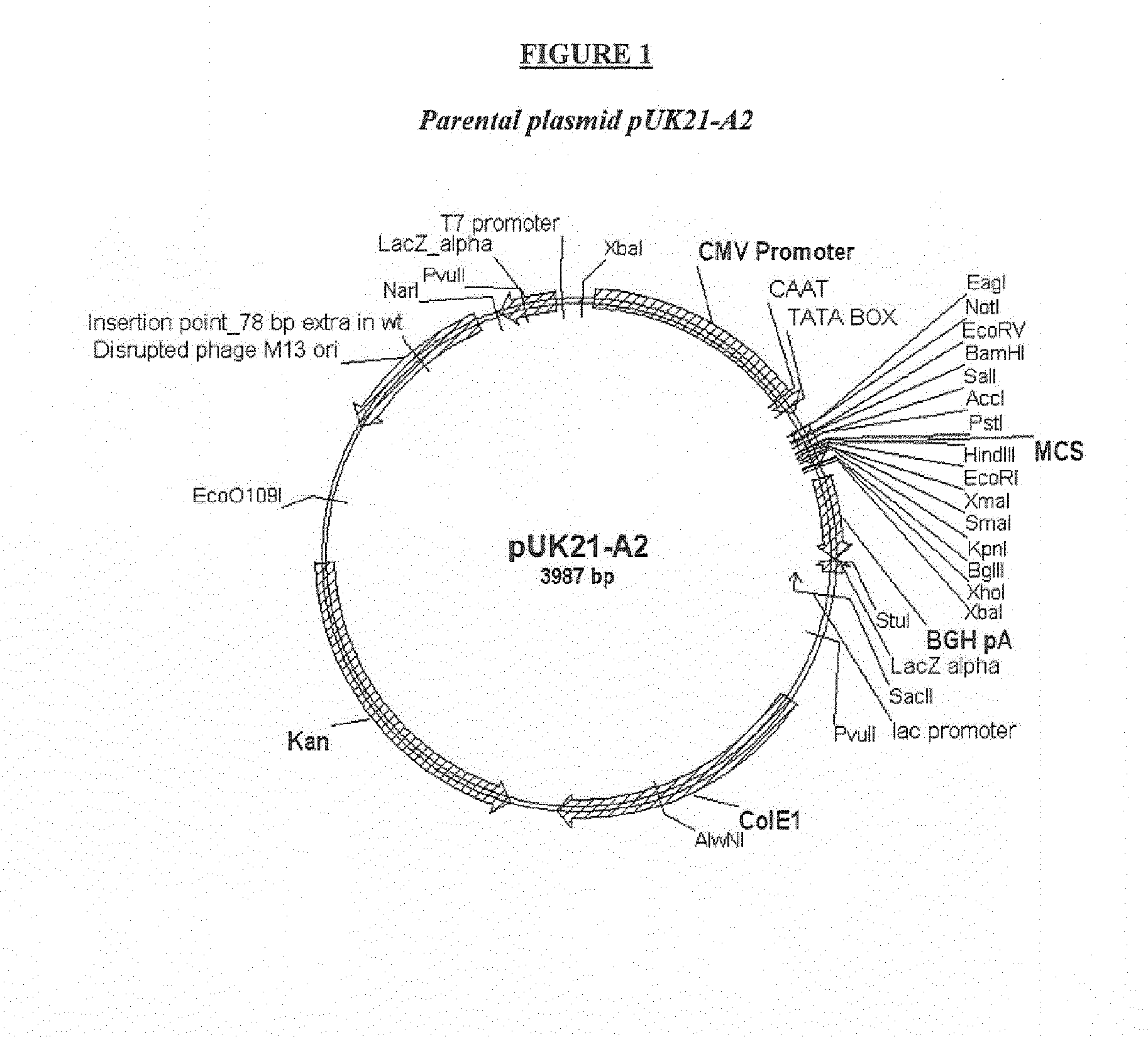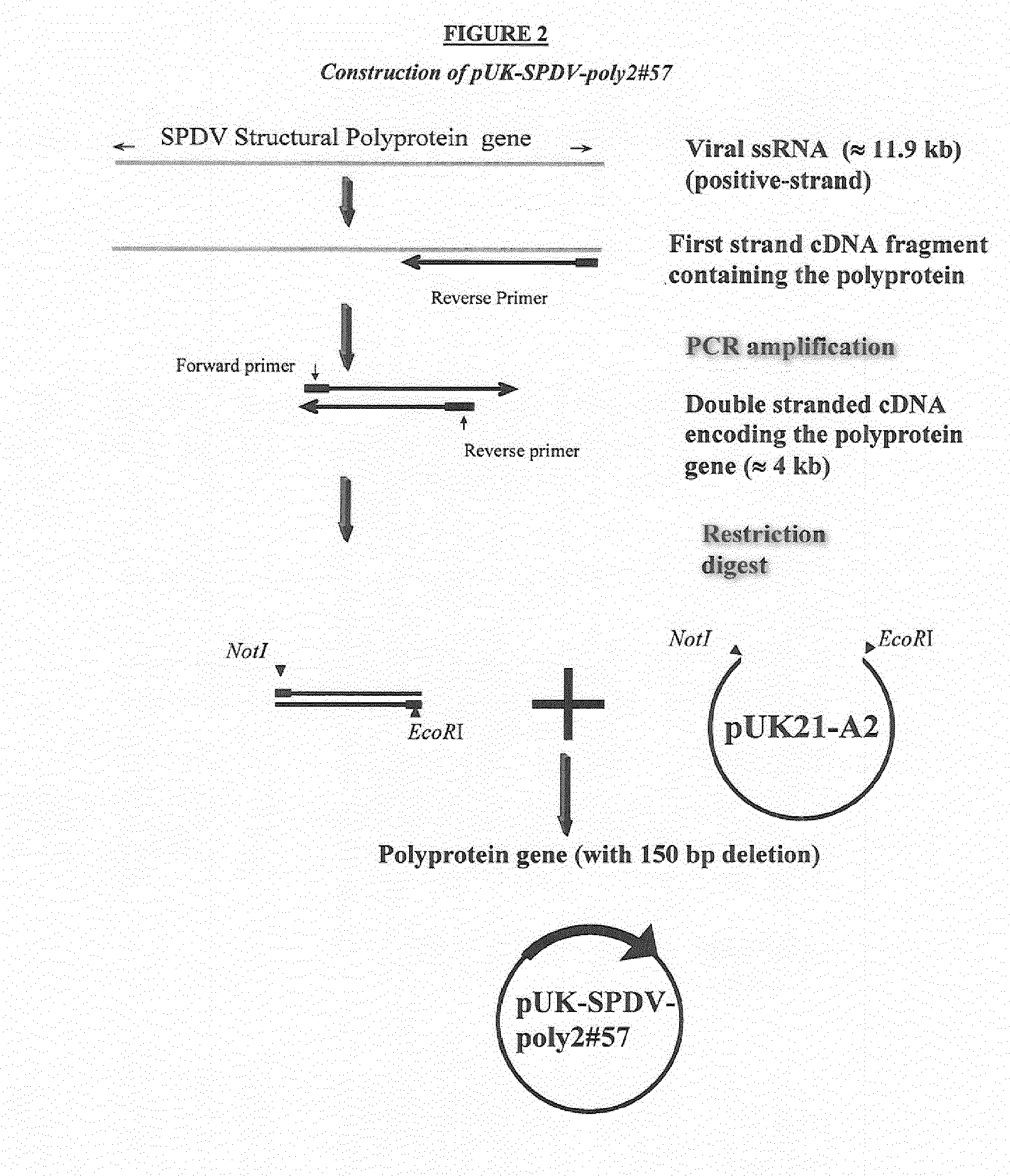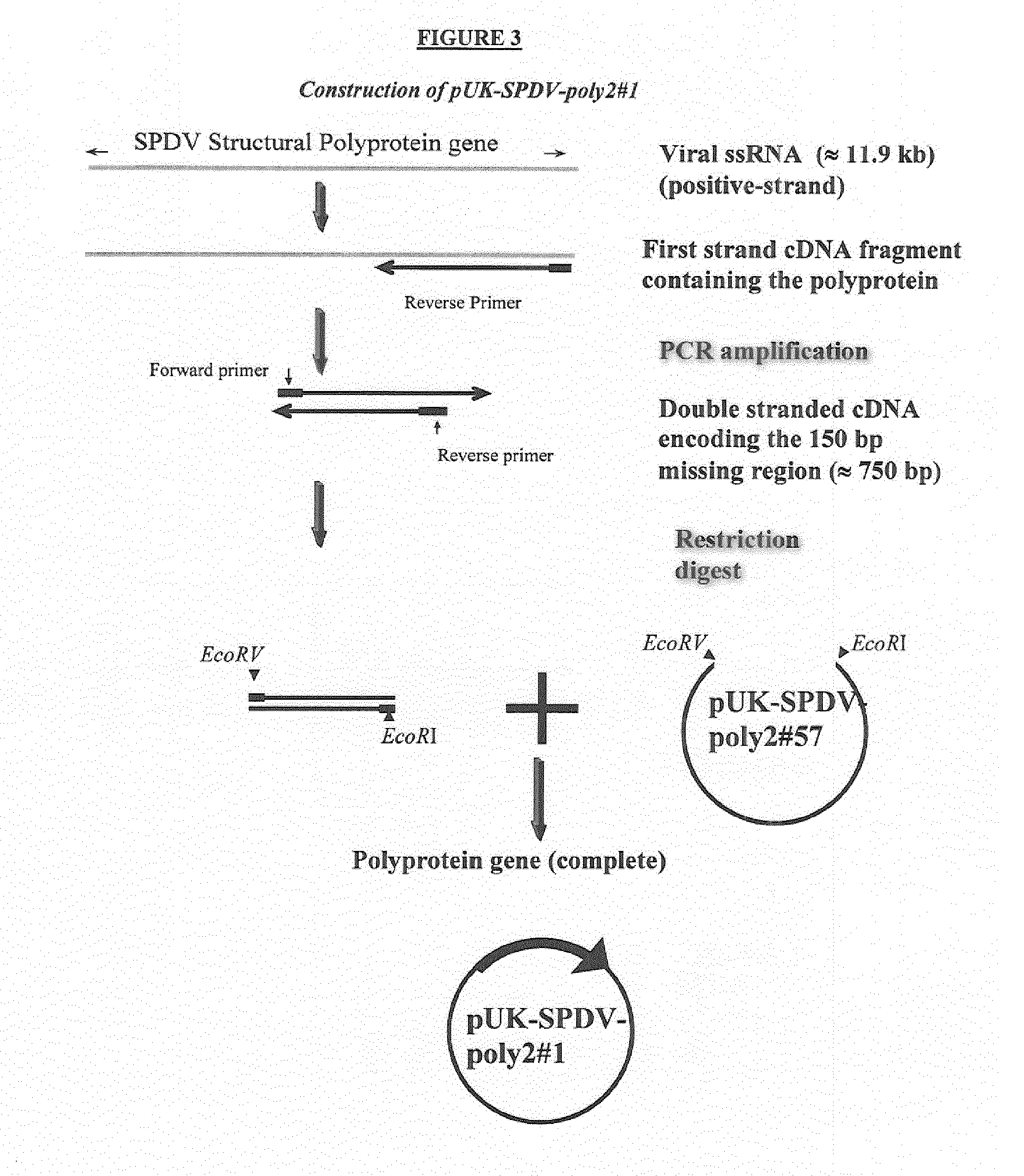Salmonid alphavirus and uses thereof
a technology of alphavirus and salmon, applied in the field of salmon alphavirus, can solve the problems of spd, scottish fishing industry, and large production loss in irish, scottish, and found to be completely ineffective dna vaccines
- Summary
- Abstract
- Description
- Claims
- Application Information
AI Technical Summary
Benefits of technology
Problems solved by technology
Method used
Image
Examples
example 1
[0104]Following translation and cleavage, the polyprotein sequence of alphaviruses produces at least six distinct proteins, including capsid protein, spike glycoproteins E3 and E1, envelope glycoprotein E2, a 6K protein, and p62 protein, an uncleaved combination of glycoproteins E2 and E3 (Strauss and Strauss, 1994; Weston et al., 1999; Villoing et al., 2000). The capsid protein possesses a protease activity that results in its autocatalytic cleavage from the nascent polyprotein during translation. The capsid protein then associates with viral RNA and self-assembles into icosahedral core particles. The E1 glycoprotein is a class II viral fusion protein, and the E2 glycoprotein is responsible for viral attachment to target host cells. The 6K protein is a constitutive membrane protein involved in glycoprotein processing, membrane permeabilization, and budding of viral particles. The function of the E3 glycoprotein is currently unknown. As described below, an expression vector encoding...
example 2
[0109]A well-known symptom of infection by salmon alphavirus is tissue damage (e.g., necrosis of cardiac tissue). While previous attempts to vaccinate salmon using recombinant protein or nucleic acids may have provided some measure of protection against infection, those vaccines were not able to ameliorate tissue damage. As described below, it was surprisingly found that the expression vectors described herein (e.g., encoding SEQ ID NO.: 3; pUK-SPDV-poly2#1 plasmid (also referred to as “PD-NAV”)) provide both a protection against and a reduction in tissue damage associated with infection by SAV. In addition, a method for measuring vaccine efficacy by associating the same with the measurement of one or more specific parameters is also described. A study was performed to demonstrate the efficacy of the PD-NAV) when administered intramuscularly (i.m.) to Atlantic salmon (Salmo salar) at a particular dose using a fresh water cohabitation challenge model and to demonstrate consistency of...
example 3
[0124]Another challenge study was also performed to further demonstrate vaccine efficacy using the heart histopathology index. The PD NAV vaccine described herein (pUK-SPDV-poly2#1 plasmid) was tested in 110 naïve Atlantic salmon assigned to each of three treatment groups (each receiving 0.05 ml intramuscular injection containing from 5 to 10 μg PD-NAV). 330 fish were maintained in a non-vaccinated control group. The different groups were tagged for identification purposes. The fish were of a bulk weight of 10-20 g (13 g average) and were maintained at 12±2° C. (400 dd immunization period). Challenge was carried out in a cohabitation model in FW (14±2° C.) in which 20% of the fish were injected intraperitoneally with SAV3 (e.g., acting as “Trojan” fish to infect others that were not injected with SAV3). Sampling (100 hearts of each group via histopathology (blinded)) was performed at 24 days post-challenge, a time known to exhibit significant damage to cardiac tissue. The heart hist...
PUM
| Property | Measurement | Unit |
|---|---|---|
| Fraction | aaaaa | aaaaa |
| Mass | aaaaa | aaaaa |
| Mass | aaaaa | aaaaa |
Abstract
Description
Claims
Application Information
 Login to View More
Login to View More - Generate Ideas
- Intellectual Property
- Life Sciences
- Materials
- Tech Scout
- Unparalleled Data Quality
- Higher Quality Content
- 60% Fewer Hallucinations
Browse by: Latest US Patents, China's latest patents, Technical Efficacy Thesaurus, Application Domain, Technology Topic, Popular Technical Reports.
© 2025 PatSnap. All rights reserved.Legal|Privacy policy|Modern Slavery Act Transparency Statement|Sitemap|About US| Contact US: help@patsnap.com



